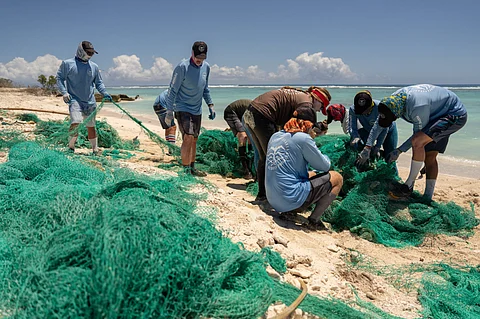

Marine Debris Technicians from the Papahānaumokuākea Marine Debris Project removing ghost nets from Kuaihelani (Midway Atoll) on April 23, 2024.
A. Sullivan-Haskins | PMDP Hawaii
The US Department of Commerce and NOAA will fund $27 million in several projects to prevent and remove marine debris in coastal and Great Lakes communities.
Precisely, local coalitions will be fostered to find solutions for marine debris with the help of NOAA Sea Grant, which bases its recommendations on science.
The projects have been selected through the Marine Debris Challenge Competition and the Marine Debris Community Action Coalitions.
According to the US Secretary of Commerce Gina Raimondo, marine debris causes "significant" threats to water quality, habitats, and economic opportunity.
Thanks to this funding, coastal communities will have access to tools and resources to address these challenges, protect coastal and marine ecosystems and boost local economies.
Additionally, NOAA Administrator Rick Spinrad, Ph.D. noted: "By involving local communities in marine debris removal and prevention, we are not only tackling a pressing environmental issue but also fostering collaboration, innovation and sustainable practices that will strengthen community resilience."
A clear example of this threat to wildlife on the coastlines are the ghost nets found in Papahānaumokuākea, Hawaii. These nets destroy coral reefs and entangle wildlife, leading to their disappearance from the habitat.
Moreover, native seabirds such as the Laysan albatross (mōlī) and the Black-footed albatross (kaʻupu) are severely affected by marine debris.
Marine debris also impacts Hawaiian green sea turtles (honu) and endangered native species such as the Hawaiian monk seal (ʻIlio holo I ka uaua) and the Laysan duck (koloa pohaka).
According to a newly-published research on the effectiveness of marine protected areas (MPAs), led by US-based nonprofit ocean conservation organization, the Marine Conservation Institute (MCI), governments falling short on marine protection pledges.
